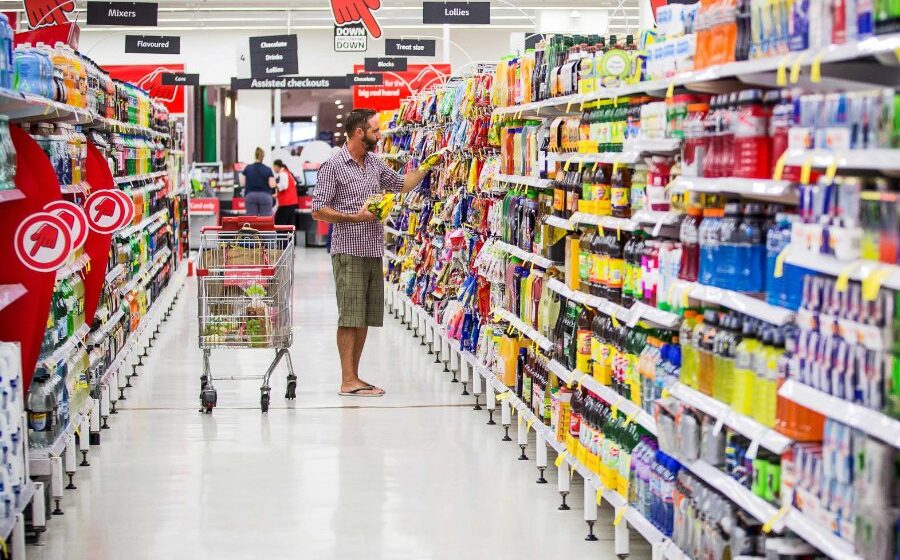Australians’ confidence in the economy and their own financial situation has plunged to lockdown levels, just weeks before an election that is being fought on the rising cost of living.
Here in Australia and globally, markets are considering rate hikes, inflation, war and supply chain woes.
The latest consumer confidence data from Westpac shows it is down 5.6 per cent to 90.4 points in May.
That is the measure’s lowest level since August 2020, when COVID lockdowns were hitting Victoria.
Westpac’s rolling data is based on surveys with 1,200 people.
Its data for May was conducted just as the Reserve Bank announced the first interest rate rise in 11 years and inflation data showed prices are surging.
“Two stunning developments are clearly unnerving consumers,” Westpac noted.
The data showed specific concerns from people about their household finances.
“The prospect of rising interest rates is clearly weighing on respondents despite the prospect of higher bank deposit rates,” Westpac noted.
Despite this, it found spending is bouncing back from COVID lockdowns.
The survey results come less than 2 weeks before a federal election that is being fought on the rising cost of living.
ASX down again on Wednesday
The Australian share market is also in a dour mood on Wednesday.
At 12pm AEDT, it was down 0.2 per cent. That took the benchmark to a 50-day low.
Wall Street suffered heavy losses earlier this week, which also hit the ASX on Tuesday.
The All Ordinaries was also down 0.2 per cent.
All of the major indexes were in the red, including mining, tech and consumer goods. The biggest losers included Healius (-7.2pc), Chalic (-5pc) and Link (-12.6pc).
Super manager Magellan was up 2.6 per cent after appointing David George as CEO and MD.
Mr George most recently held the role of deputy chief investment officer at the Future Fund, where he oversaw an asset base of about $170 billion.
Graincorp was down 2.6 per cent, even after the key food company posted a 50 per cent increase in revenue.
The ASX-listed company says it’s doing better due to better planting conditions for crops, along with higher demand for grain amid tightening supply globally.
The supply of grain has been hit by the war in Ukraine, for instance.
US markets still volatile
The Australian share market’s continuing trend down came as markets globally mulled a maelstrom of factors, including war, inflation, rate hikes and supply-chain woes.
Wall Street also had volatile trade on Tuesday (local time) but the end losses were less significant.
The Dow Jones closed 0.3 per cent down, while the S&P 500 and Nasdaq both recovered some losses, with 0.3 and 1 per cent gains respectively.
The Dow dipped as the market prepared for inflation data to be released tonight (Australian time).
European markets also recovered some losses, with the DAX up 1.2 per cent.
Meanwhile, the price of oil is down again, with it now below $US100 a barrel for Brent. The fall comes amid concerns about continued lockdowns in China, which could ease demand.
Bitcoin is also taking another battering.
It has lost about $US10,000 ($14,418) in a week. That is a quarter of its value, which takes the leading cryptocurrency to $US31,000.
What will the US inflation data show?
The last round of inflation data in the US showed another surge in prices.
Headline inflation is sitting at 8.5 per cent, with the March data showing it is now at its highest level since December 1981.
That is being led by surges in energy prices, including oil, and even on food. It is a similar story here in Australia, however, our headline inflation is lower at about 5 per cent.
Even without the spikes, the US core inflation is still at about 6.5 per cent.
Analysts are tipping that the US data for April will show the situation is calming down, however, that is not a broad consensus.
“The consensus of US economists expect headline inflation to decelerate significantly from 1.2 per cent/month in March to only 0.2 per cent/month in April because retail petrol prices have stabilised,” ANZ analysts wrote.
“But core inflation is expected to step up slightly from 0.3 per cent/month in March to 0.4 per cent/month in April.”
Higher-than-expected inflation could mean another interest rate hike.
Currently, the yield on 10-year treasury notes is slightly down on yesterday, below 3 per cent, showing the market is not expecting a rate hike as much.
The data comes out just before midnight, Australian time.




Leave a Reply